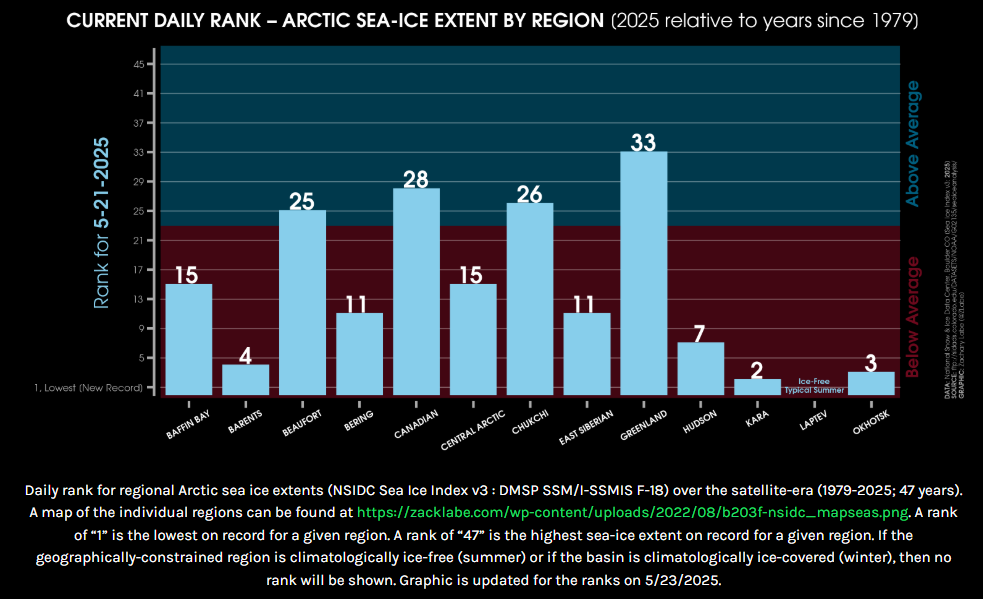
In the latter half of May 2025, a curious shift in Arctic conditions caught the attention of polar researchers. While the overall Arctic Ocean continued to shed its winter coat and melt into its seasonal low, four of its most expansive seas—the Beaufort, Chukchi, East Siberian, and Laptev—stood out for resisting the thaw. These vast marginal seas, normally part of the broader melting trend, showed more sea ice than expected, bucking the usual narrative of relentless Arctic decline.
This unexpected resilience can be traced to a few key weather and climate patterns. During spring, a high-pressure system lingered over the Pacific side of the Arctic. Such systems tend to clear skies and calm the atmosphere, reducing cloud cover and letting more heat escape the Earth’s surface—essentially cooling the region below. With lower temperatures and less turbulent winds, conditions favored slower melting and even slight ice growth in some areas.
Furthermore, the tail end of winter had already set the stage. Back in late February through March, the nearby Bering Sea had seen a temporary rebound in ice growth, bringing it closer to normal levels for the season. This may have helped stabilize ice in adjacent regions like the Chukchi and East Siberian Seas as spring approached.
Despite these local anomalies, the larger Arctic picture remains troubling. March 2025 saw the smallest maximum sea ice extent ever recorded in satellite history, and the long-term trend still points to a steadily warming Arctic. The fact that a few seas were above average in May is more a reflection of short-term weather quirks than a signal of recovery.
In essence, the persistence of ice in these four seas serves as a reminder that Arctic climate shifts are uneven and complex. While global warming remains the dominant force shaping the region, short-term cold spells and atmospheric configurations can still carve out temporary exceptions—small icy islands of resistance in an ocean that is otherwise retreating.


Source: https://zacklabe.com/arctic-sea-ice-extentconcentration/


























